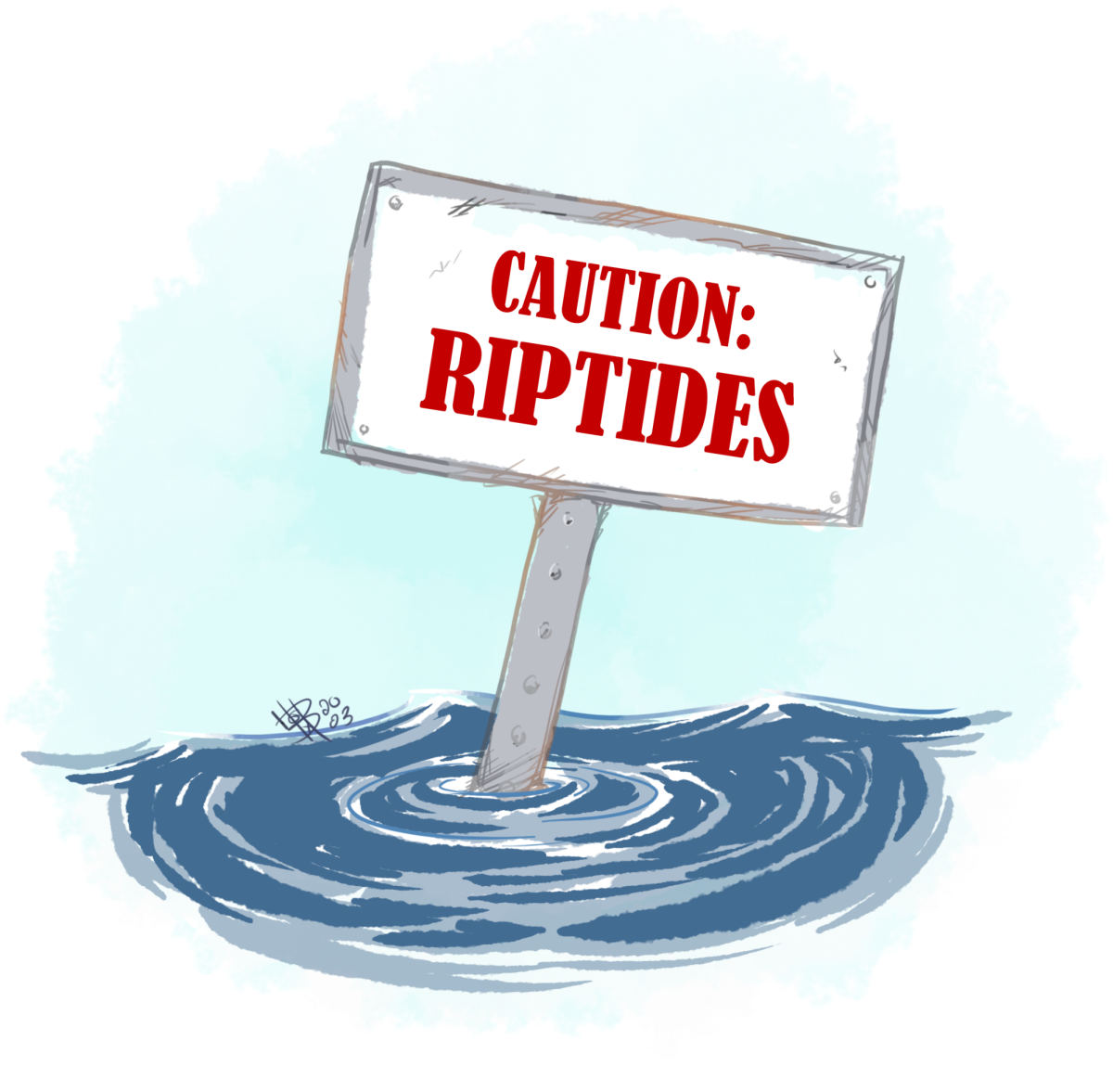What you need to know to stay safe on the coast this summer
The ultimate beach safety guide
July 15, 2023
Everybody loves the beach, and summer is the perfect time to go out and enjoy a day in the sun, but beach trips can end in tragedy. It’s important you’re prepared with the knowledge to be safe on the coast while having as much fun as you can.
Most of the hazards are from the powerful Pacific Ocean and its unpredictability. Sneaker waves, or riptides, may catch you by surprise. Kelli Ennis, the director at the Haystack Rock Awareness Program in Cannon Beach, answered some questions about beach hazards, including riptides.
“Sneaker waves take people by surprise,” Ennis said. “These are surges that will appear without warning and continue to run high up the beach; they’re usually not tall waves, rather they just continue to push up the beach. High surge alert warnings can help give people a heads-up that sneaker waves may be more prevalent that day, but they can happen at any time. To avoid sneaker waves be prepared, never turn your back to the ocean, never swim alone and be aware of surge warnings.”
Riptides are powerful currents that flow from shore back out to sea. When people get caught in them, they can be pulled into the ocean by the current. In 2021, The National Weather Service estimated that there were at least 98 deaths attributed to riptides nationwide; they are by far the greatest hazard on the coast.
The most important thing to remember if you get caught in a riptide, is to swim parallel to shore to escape. Never try to swim directly against a riptide to shore. No matter how good of a swimmer you may be, you will exhaust yourself, and drown. Riptides can not be swam against. Once you are out of the current, you should swim at an angle back to shore.
It’s important to remember that most public beaches in Oregon do not have lifeguards. Some of the few that do, like the beach in Seaside, are only on duty from 11 a.m. to 7 p.m.
Sharks are also a hazard for surfers or others further out from the shore, and while rare, shark bites can happen.
“Great Whites will feed off seals and sea lions,” Ennis said, “They can be found a few hundred yards off the beach in the surf zone. Shark bites are most common during the fall when seals are fattening up on salmon for the winter. They are also more common in low-light situations when a shark is more likely to confuse a human with a seal.”
Another hazard in the waters is driftwood.
Driftwood carried in strong currents or in high-wind and high-surge situations can easily knock someone over or crush them. Even small logs can be heavier than they appear; the impact can have enough force to break a healthy tibia bone. Don’t underestimate driftwood, and do not swim or play in areas where there are logs floating.
Hiking is also a popular activity on the coast, but hikers should be aware that the trails on the coast are especially susceptible to erosion or landslides.
Falling rocks are also a hazard on cliff faces or in caves. Make sure you have appropriate footwear and stay on the trails. Hikers should also be cautious of elk. One of the largest members of the deer family, a mature elk can be up to five-feet tall and can weigh up to 730 pounds. Elk can be territorial, especially around dogs, and should be given their space. Elk herds commonly cross highways on the coast as well. It’s not an uncommon sight to see herds as large as 400 elk blocking major roadways.
If you plan on camping or having a bonfire on the beach, be sure to keep them safe. Keep fires at least 25 feet away from the dune grass, don’t burn driftwood and never leave your fire unattended. You should also be sure to always extinguish your fires with water and not sand. Lastly, make sure you follow the burn and fire warnings from local fire districts.
The Oregon Coast is also home to many protected species, and it’s important that we do not disturb or harm any of the native animals that live there. Summer in particular is the nesting season for many species of sea or shore birds. All nesting areas should be avoided and left alone.
“Snowy plover zones in certain dune grass areas will be roped off and labeled as protected,” Ennis said. “Many rocky shores are nesting sites for various birds such as the black oystercatcher who are particularly sensitive to disruptions and at risk of nest abandonment. If you are near seabirds or shorebirds whether they are foraging or nesting, just be sure to leash your dogs and provide them plenty of space.”
Sea Stars have recently faced a massive die-off event known as sea star wasting syndrome. This mysterious pathogen causes sea stars to fall apart and die within days, leaving only a gooey pile. From 2013 to 2017, an estimated 90% of Sunflower Sea Stars, one of Oregon’s keystone species, were killed off by sea star wasting syndrome, and they are now critically endangered. Many other species are threatened by this as well. Do not touch or move sea stars for any reason, this may cause them additional stress. The harvesting or collecting of any sea stars is banned by the Oregon Department of Fisheries and Wildlife.
Another thing to mention is what you bring to the beach. You may have everything you need to have a fun day in the sun, but one thing to consider is bringing a garbage bag.
“Most people know how to pack in and pack out when at the beach,” Ennis said, “But it’s easy to overlook the need for a large garbage bag or two. It’s not uncommon for beach-side trash cans to be overflowing during peak summer months or they may be far from your camp. Bringing a garbage bag is helpful for keeping our public coast clean, plus given how windy it can be, it’s not uncommon to easily lose pieces of garbage and waste, which a tie bag can help prevent. Bonus, you can be a good citizen and pick up marine debris and garbage that you see while you’re enjoying your time here on the coast.”
Ennis’s biggest piece of advice for a day at the coast is to have fun and to learn about where you’re visiting.
“Learn about the local culture and wildlife,” Ennis said. “All our coastal towns have rich histories, between the ecology, tribal histories, cultural histories, military and industry history, there is so much to learn about. I recommend checking out park services, community centers, chambers, various local organizations and non-profits specific to the region you are visiting to learn more. Most locals enjoy sharing our towns with visitors when they begin to come alive during the summer, and that little bit of education and respect goes a long way.”






